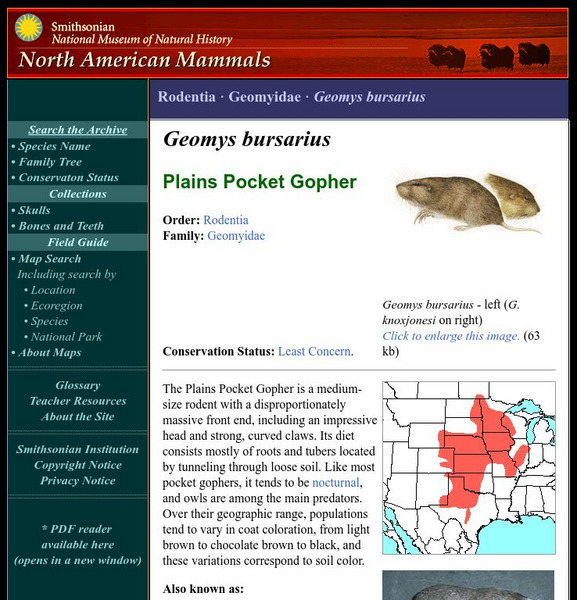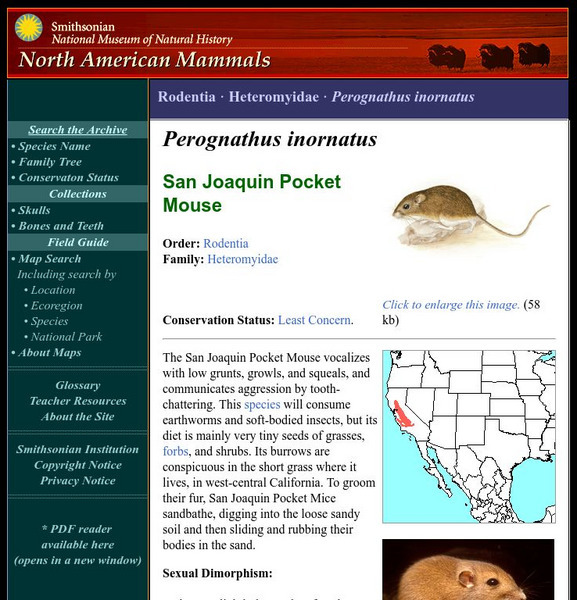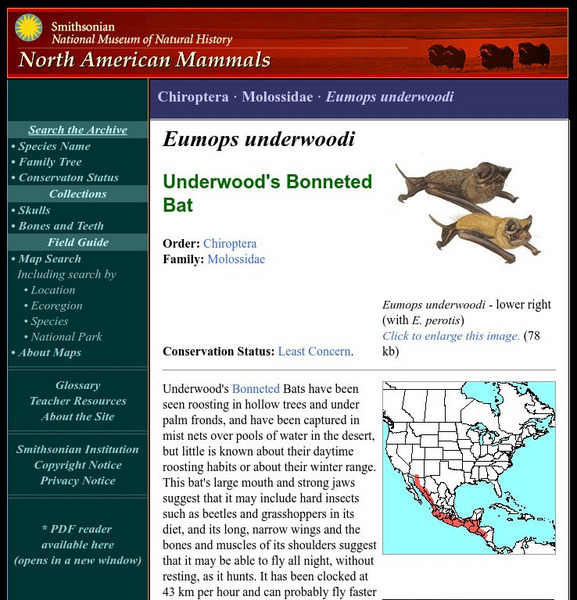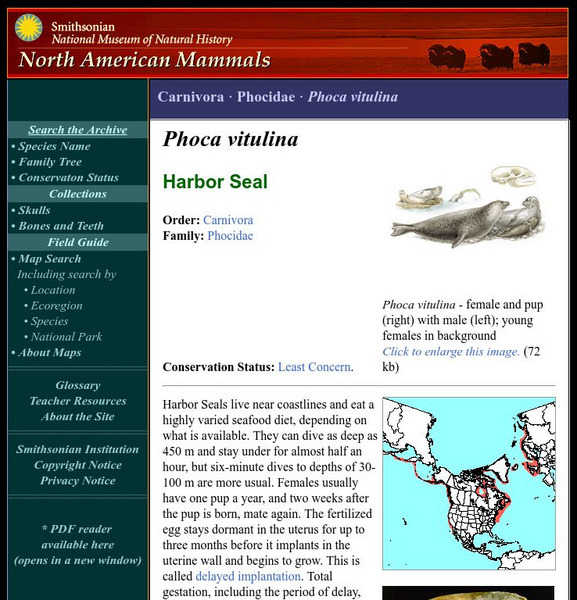Saint Louis Zoo
Saint Louis Zoo: Western Lowland Gorilla
Discover fun facts and learn about the habitat, breeding, appearance, diet, and conservation status of the western lowland gorilla.
Saint Louis Zoo
Saint Louis Zoo: Sumatran Orangutan
Discover fun facts and learn about the habitat, breeding, diet, and appearance of the Sumatran orangutan.
Saint Louis Zoo
Saint Louis Zoo: Geoffroy's Marmoset
Discover fun facts and learn about the habitat, breeding, appearance, diet, and conservation status of the Geoffroy's marmoset.
Saint Louis Zoo
Saint Louis Zoo: Black and White Ruffed Lemur
Discover fun facts and learn about the habitat, breeding, appearance, diet, and conservation status of the black and white ruffed lemur.
Saint Louis Zoo
Saint Louis Zoo: Speke's Gazelle
Discover fun facts and learn about the habitat, breeding, appearance, diet, and conservation status of the Speke's gazelle.
Saint Louis Zoo
Saint Louis Zoo: Reticulated Giraffe
Discover fun facts and learn about the habitat, diet, behavior, breeding, appearance, and conservation status of the reticulated giraffe.
Saint Louis Zoo
Saint Louis Zoo: Okapi
Discover fun facts and learn about the habitat, diet, behavior, breeding, appearance, and conservation status of the okapi.
Saint Louis Zoo
Saint Louis Zoo: Black Rhinoceros
Discover fun facts and learn about the habitat, diet, behavior, breeding, appearance, and conservation status of the black rhinoceros.
Saint Louis Zoo
Saint Louis Zoo: Babirusa
Discover fun facts and learn about the habitat, diet, behavior, breeding, appearance, and conservation status of the babirusa.
Saint Louis Zoo
Saint Louis Zoo: Jaguar
Discover fun facts and learn about the habitat, diet, breeding, appearance, and conservation status of the jaguar.
Saint Louis Zoo
Saint Louis Zoo: Snow Leopard
Discover fun facts and learn about the habitat, breeding, appearance, diet, and conservation status of the snow leopard.
Saint Louis Zoo
Saint Louis Zoo: Giant Anteater
Discover fun facts and learn about the habitat, breeding, appearance, diet, and conservation status of the giant anteater.
Smithsonian Institution
National Museum of Natural History: American Mammals: Hairy Legged Vampire Bat
Vampire bats are amazingly well-equipped to live on a diet of blood and only blood - something no other mammal in the world does. Its teeth are so razor-sharp that the bird or mammal it feeds on usually does not even feel the tiny bite...
Smithsonian Institution
National Museum of Natural History: American Mammals: Ocelot
Ocelots occur in a wide range of habitats, from rainforest to savanna to dry, scrubby terrain, at mid- to low elevations from Texas and Arizona to northern Argentina. They are feed on small mammals, and also frequently include birds,...
Smithsonian Institution
National Museum of Natural History: American Mammals: Plains Pocket Gopher
The Plains Pocket Gopher is a medium-size rodent with a disproportionately massive front end, including an impressive head and strong, curved claws. Its diet consists mostly of roots and tubers located by tunneling through loose soil....
Smithsonian Institution
National Museum of Natural History: American Mammals: White Sided Jackrabbit
The White-sided Jackrabbit strongly prefers level ground to hills, and does not require shrubs for cover, but uses clumps or dense stands of grass instead. Grass also makes up more than 99 percent of its diet. Learn more about the Lepus...
Smithsonian Institution
National Museum of Natural History: American Mammals: Olympic Marmot
Olympic Marmots are highly social, living in groups made up of an adult male, one or more adult females, two-year-olds, yearlings, and young. Their diet consists of grasses and sedges, with flowering plants in season. Learn more about...
Smithsonian Institution
National Museum of Natural History: American Mammals: San Joaquin Pocket Mouse
The San Joaquin Pocket Mouse vocalizes with low grunts, growls, and squeals, and communicates aggression by tooth-chattering. This species will consume earthworms and soft-bodied insects, but its diet is mainly very tiny seeds of...
Smithsonian Institution
National Museum of Natural History: American Mammals: Long Tailed Vole
Long-tailed Voles need cool, moist habitats, so they are found mostly near the peaks of mountain ranges. Fruits and seeds make up the bulk of their diet, but they also eat fungi, bark, and leaves if necessary. Learn more about the...
Smithsonian Institution
National Museum of Natural History: American Mammals: Taiga Vole
Taiga Voles eat mostly grass, but include some other plant matter in their diets. They inhabit forest habitats near streams and bogs, using both underground and surface runways. Learn more about the Microtus xanthognathus, more commonly...
Smithsonian Institution
National Museum of Natural History: American Mammals: Underwood's Mastiff Bat
Underwood's mastiff bats have been seen roosting in hollow trees and under palm fronds, and have been captured in mist nets over pools of water in the desert, but little is known about their daytime roosting habits or about their winter...
Smithsonian Institution
National Museum of Natural History: American Mammals: Harbor Seal
Harbor Seals live near coastlines and eat a highly varied seafood diet, depending on what is available. They can dive as deep as 450 m and stay under for almost half an hour, but six-minute dives to depths of 30-100 m are more usual....
Sea World Parks & Entertainment
Sea World: Killer Whales
Outlines the characteristics of the killer whale, including classification, habitat, behaviors, and conservation. Helps students identify with whales with a list of "Books for Young Readers." Information at a level of upper intermediate...
Sea World Parks & Entertainment
Sea World: Harbor Seals
Outlines the characteristics of the harbor seal, including classification, habitat, behaviors, and conservation. Helps students identify with seals with a list of "Books for Young Readers." Information at a level of upper intermediate or...











